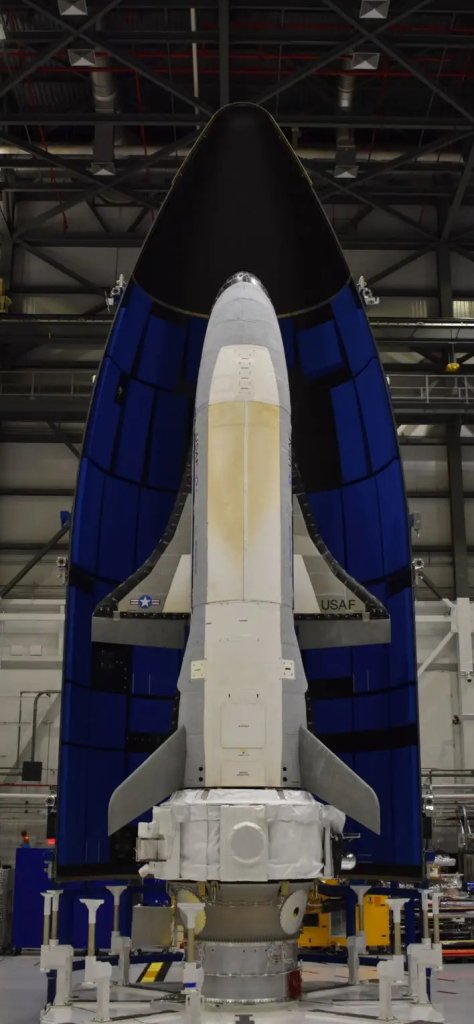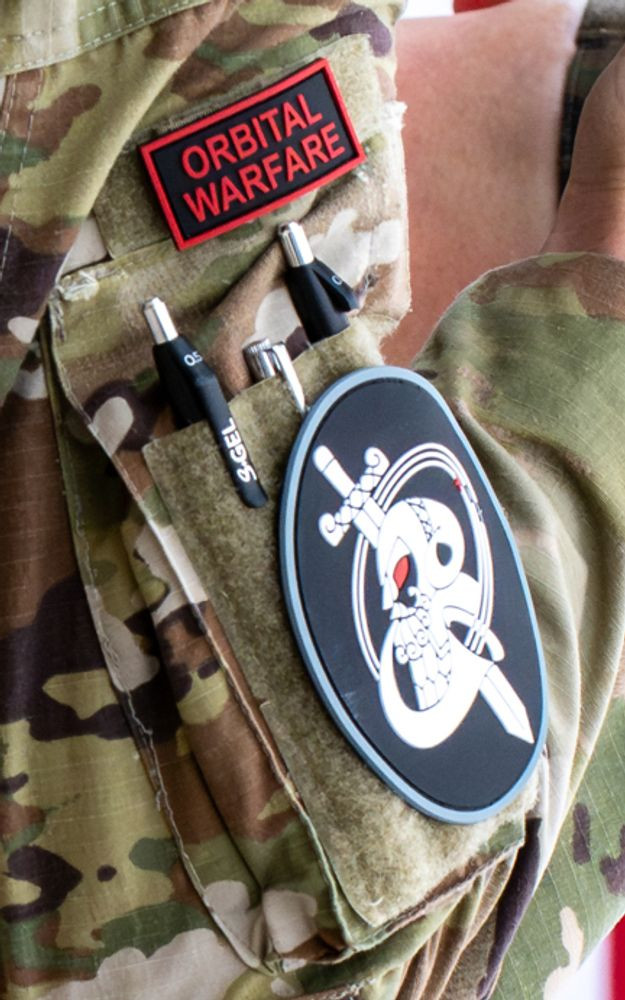One of America’s secretive X-37Bs is set to perform a series of aerobraking maneuvers that will significantly change its orbit, which is said to be a first-of-its-kind event for the mini-space shuttle. This is part of the seventh known X-37B mission, which began last December, and has already involved the reusable spaceplane operating in a much higher orbit than ever before.
The U.S. Space Force, to which the two X-37Bs are now assigned, announced the planned orbital maneuvers as part of the current Orbital Test Vehicle 7 (OTV-7) mission earlier today. The X-37B that is now in space was launched aboard a SpaceX Falcon Heavy rocket from the Kennedy Space Center in Florida on December 28, 2023.

Through the “series of novel maneuvers, called aerobraking” the X-37B will “change its orbit around Earth and safely dispose of its service module components in accordance with recognized standards for space debris mitigation,” according to the Space Force release. “The use of the aerobraking maneuver – a series of passes using the drag of Earth’s atmosphere – enables the spacecraft to change orbits while expending minimal fuel.”
It isn’t clear if the X-37B has already dropped to a lower orbit ahead of the aerobraking. As noted, the mini-shuttle will have to pass relatively close to the Earth to drag in the atmosphere to execute the maneuver at all.
The use of aerobraking in space flight is not new and has been employed by NASA and other space agencies globally to change the orbits of other spacecraft for decades now. In its release today, Space Force also explicitly cited “decades of general lessons learned from the scientific community conducting Moon and Mars missions,” along with experience gained during the previous six X-37B missions, as having contributed to the planning around these new maneuvers.
“Once the aerobrake maneuver is complete, the X-378 [sic; X-37B] will resume its test and experimentation objectives until they are accomplished, at which time the vehicle will de-orbit and execute a safe return as it has during its six previous missions,” the release adds. “Since December 28, 2023, the United States Space Force, supported by the Air Force Rapid Capabilities Office, has conducted radiation effect experiments and has been testing Space Domain Awareness technologies in a Highly Elliptical Orbit.”

“This novel and efficient series of maneuvers demonstrates the Space Force’s commitment to achieving groundbreaking innovation as it conducts national security missions in space,” Secretary of the Air Force Frank Kendall said in an accompanying statement.
“This first of a kind maneuver from the X-37B is an incredibly important milestone for the United States Space Force as we seek to expand our aptitude and ability to perform in this challenging domain,” Gen. Chance Saltzman, Chief of Space Operations, also said.
This all being said, there are immediate questions about whether or not this is actually a first-of-its-kind event for the X-37B, which is already known to be extremely maneuverable.
It “can do an orbit that looks like an egg and, when it’s close to the Earth, it’s close enough to the atmosphere to turn where it is,” then-Secretary of the Air Force Heather Wilson said at the annual Aspen Security Forum in 2019. “Which means our adversaries don’t know – and that happens on the far side of the Earth from our adversaries – where it’s going to come up next. And we know that that drives them nuts. And I’m really glad about that.”
It remains unclear what exactly Wilson was describing and whether this was a capability the X-37B had actually demonstrated at that time. The War Zone has posited in the past that this might have pointed to the mini-shuttle’s having the ability to dip its wing into the Earth’s atmosphere as it passed by, and to use that force to rapidly redirect its orbit.
Wilson’s comments were already highly curious at that time and fed into long-standing speculation about the exact capabilities and mission sets of the X-37B. The reusable spaceplane has a truckbed-sized main payload bay and can carry additional payloads on a service module adapter attached to its tail end.

As The War Zone was first to report on in 2021, the specific unit within the Space Force that now oversees the X-37Bs, Space Delta 9, has what is still a very nebulous “orbital warfare” mission. Space Delta 9 “is the focal point for preparing, presenting and projecting assigned and attached forces for the purpose of conducting protect and defend operations and providing national decision authorities with response options to deter orbital threats,” is how the Space Force described the unit’s mission following a routine change in its top leadership earlier this year.
Space-based early warning satellites are the most commonly cited capabilities in this ecosystem, as seen in the video below. Currently, the Air Force only acknowledges having only one “counter-space” system, a terrestrial electronic warfare jammer called the Counter Communications System (CCS).

“We … are looking at the role of EW [electronic warfare], particularly against some of the space threats that are coming out,” Air Force Secretary Kendall told The War Zone and other outlets at a media roundtable on the sidelines of the Air & Space Forces Association’s (AFA) main annual conference last month. “So the space-based side of it’s very important to us.”
In the face of these ever-expanding threats to U.S. assets in orbit, including Russian work on a new space-based nuclear-armed anti-satellite weapon, Space Force is “creating counter-space capabilities that allows us to be more resilient… and then when they [adversaries] have offensive capabilities of their own, our ability to either maneuver, to deny, to hide, to run,” Chief of Space Operations Saltzman said at a separate roundtable at the AFA conference. This came in response to a direct question on this topic from our own Howard Altman. When asked if he could further elaborate on these developments, Saltzman flatly said “no.”
Aerobraking maneuvers could be one means for space-based assets to evade hostile attacks.
“We must conduct… responsible counter-space campaigning,” Gen. Michael Guetlein, Vice Chief of Space Operations, also said while speaking at the Defense News Conference in September. “This means we must develop capabilities to… protect and defend ourselves, but in doing so, we need to demonstrate safe and professional behavior in alignment with international norms of behavior, and we must work hard to protect the environment from additional pollution that could jeopardize the use of space for generations to come.”
At that time, Guetlein noted that “most of this kit is classified,” but that “a lot of it is focused on defeating the adversary’s kill webs, if necessary.”

In 2022, the U.S. government announced a self-imposed moratorium on destructive direct-ascent anti-satellite weapon testing and called on others to do the same. Such testing, like one Russia conducted in 2021, creates clouds of debris that pose significant threats to other objects in orbit.
In addition, the new details today about the X-37B’s operating envelope and activities as part of OTV-7 highlight additional outstanding questions about future reusable spaceplanes, including ones with greater offensive capabilities, that the U.S. military might be pursuing. Space Force’s first-ever officially commissioned piece of artwork, seen below, notably explicitly depicts a reusable space plane intercepting a hostile ‘killer satellite.’

The War Zone asked officials at the AFA conference last month about any plans to expand the X-37B fleet or develop a follow-on vehicle, which they declined to answer at the time. We have reached out since for more information, but have yet to receive a response.
In the meantime, just what we know about the X-37B OTV-7 mission, including the newly disclosed planned aerobraking maneuvers and the previously announced novel high elliptical orbit, continues to be especially interesting in of itself.
Contact the author: joe@twz.com
